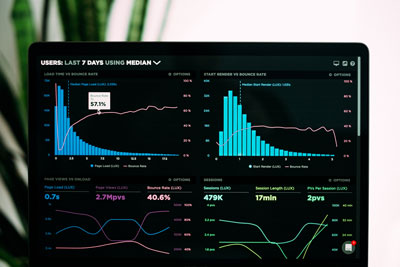
Being able to make good decisions, good plans and good returns is fundamental to a successful business. Today, the foundation stone to good decision making is good and well organised electronic data.
This Digital Transformation facilitates:
- Knowledge Management
- Business Dashboards
- Business Intelligence
- Artificial Intelligence

Knowledge Management is important because it boosts the efficiency of an organisation’s decision-making ability. In making sure that all employees have access to the overall expertise held within the organisation, a smarter workforce is built who are more able to make quick, informed decisions that benefit the company. For example, when selling doors, knowing exactly which hinges and door handles will fit to each door type, which are fire doors and when fire doors should be purchased and how to price the options is easy if the information is at your fingertips.
Knowledge Management requires well organised and accessible data. That your main data is held in inter-connected databases that offer one version of the truth. So, for example, holding your data in a data store such as Microsoft SQL server where all data is related rather than spreadsheets support Knowledge Management and decision making in your business. Data sources do not just have to be your own; they can include external data sources such as the weather.
Business Dashboards are a powerful tool for executives with rock solid metrics and knowledge performance indicators. Dashboards summarise information and present an easily digestible view of business performance to help decision-makers.
Business Dashboards such as Microsoft Power BI connect to your data. They allow you to look at “what if” scenarios and offer a range of user interfaces including charts and geographic. For example, a map interface will show you how sales vary across the country in good weather and bad.


Business Intelligence is a technology-driven process for analysing data and delivering actionable information that helps executives, managers and workers make informed business decisions. Some basic correlation analysis and heat maps will show you where synergy exists and where it does not. In building maintenance where a plumber’s visit is often followed by an electrician’s, time, effort and cost could be saved if resource planning allowed for this and sent someone with both plumbing and electrical skills. With Business Intelligence flags can warn you when things are as expected and when they are not.
Artificial Intelligence refers to the simulation of human intelligence in machines that are programmed to think like humans and mimic their actions. The term may also be applied to any machine that exhibits traits associated with a human mind such as learning and problem-solving.
Artificial Intelligence comes into play when we train and then run “models” against data. Examples of Artificial Intelligence models include product recommendation engines helping businesses to cross sell, customer cluster analysis which helps you understand the types of customers you have, predictive maintenance which allows you mend equipment before it breaks saving down time and customer activation models, which predict when a customer is going to buy allowing you to time an intervention at the exact point a customer may be considering your competition.
Objective IT is expert in all these technologies and can help guide your business through a Digital Transformation to facilitate good decision making and improved performance.
